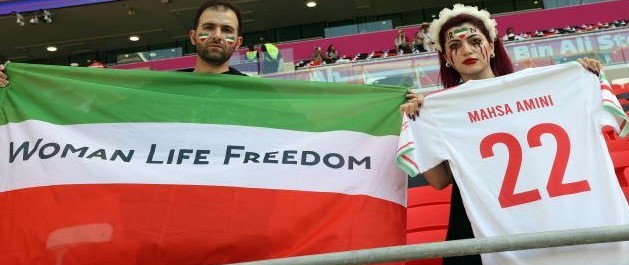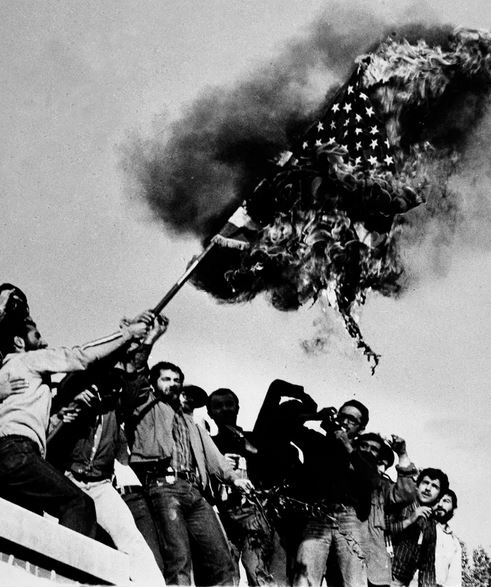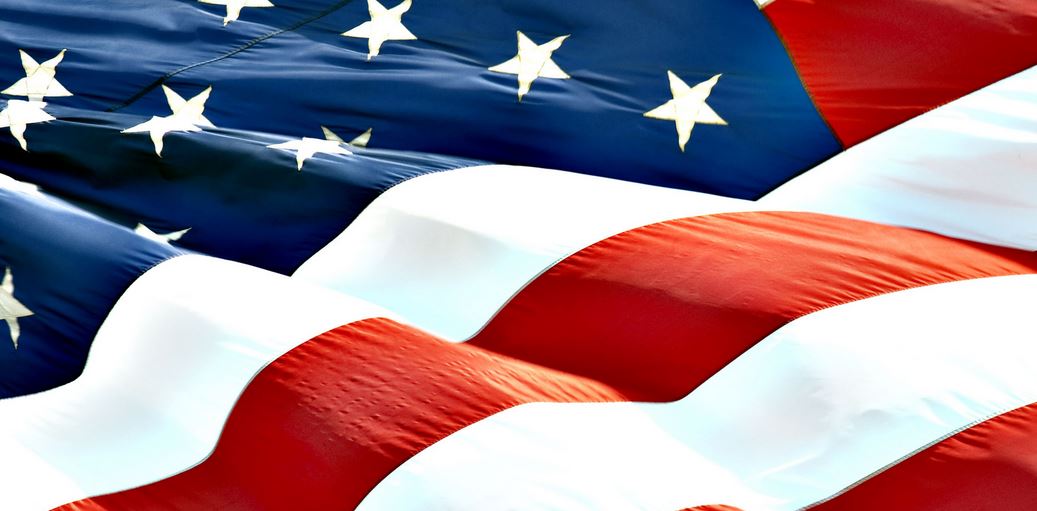On Tuesday, November 29, the U.S. Men’s national soccer team is set to face off against the Iranian team at the 2022 World Cup and it looks like more than soccer will be at play.
It’s no secret that Iran is currently experiencing civil unrest with constant protests over the recent death of Mahsa Amini, a 22-year-old woman who was arrested for “improperly” wearing a hijab.
Amini was severely beaten by Guidance Patrol officers and the incident sparked outrage against a government who was already under scrutiny for power outages, water shortages and price hikes on everyday goods. You could say that Amini’s death was the last straw for the people of Iran. To add insult to injury, the disappearance and subsequent death of Nika Shakarami, a 16-year-old protester who was abducted during a demonstration, has made matters worse.
Social media videos show home of late Iranian leader Ayatollah Ruhollah Khomeini on fire in latest protests
https://www.abc.net.au/news/2022-11-19/iran-protesters-set-fire-to-late-khomeini-house/101674396
Iran has often been criticized for its oppressive regime and treatment of women, but this is the first time that the world is exposed to Iran’s inner workings and the majority of the world has shown support for the protests in the hope that it will affect change.
The US Men’s soccer team has been one of those many supporters and they have shown that support by posting an image of the Iran flag without the Islamic Republic emblem. Even though the post was temporary (it was taken down after a day) and simply created for effect, Iran has called for the U.S. team to be removed from the World Cup tournament because of it.
That’s clearly not going to happen and it has shown Iran’s sensitivity to criticism.
You’re probably wondering why this is such a big deal and, without fully understanding the political history between the U.S. and Iran, you’d be absolutely right to think that. So, let’s take a look at the key event that led to all this tension.
A BIT OF HISTORY: IRAN STRUCK FIRST
If you’ve ever studied American politics and history, you probably must know that relations between the USA and Iran can be described as tense at best. Although Iran was a long-time U.S. ally, everything changed on November 4, 1979 when a group of radical Iranian students stormed the U.S. embassy and took 52 embassy employees hostage in an attempt to overthrow Shah Mohammad Reza Pahlavi, who was the secular leader of Iran at the time, and replace him with Ayatollah Ruhollah Khomeini, a Shiite cleric who opposed the shah’s Westernization of Iran. Essentially, Khomeini resented the U.S.’s interest in Iran and rejected their way of life entirely.
The crisis had negative consequences for the U.S. who was led by president Jimmy Carter. The hostage crisis lasted 444 days and the way President Carter handled the matter made the U.S. seem weak and inefficient. The U.S. had been unsuccessful in its effort during the Vietnam war, so they chose to handle the Iran hostage crisis with caution, but it just created issues domestically and internationally. The hostage crisis also took place during the U.S.’s Cold War with Russia who took advantage of the situation to undermine the U.S. authority and standing on the international stage.

The crisis played a big part in the 1980 presidential election, which helped Ronald Reagan defeat Carter. The hostages were released shortly after Reagan’s inauguration even though the Reagan administration had nothing to do with the resolution of the matter. If you want to know more about the topic or get a feel for the tension at the time, check out the movie Argo starring Ben Affleck. Argo takes place during the Iran hostage crisis and the plot centers around a group of U.S. embassy workers who escaped captivity, went into hiding and attempted to safely leave Iran with the help of the Canadian embassy.
Once the relations with Iran were severed, the U.S. appointed the Swiss to oversee American interests and protective powers in Iran. Unfortunately, the relations between the U.S. and Iran have never fully been restored. Although there have been moments of peace between the two countries in the last four decades, there have been a lot of moments that could have pushed both countries to the brink of war.
There were naval and military strikes that took place over the years where each country vowed retaliation, but nothing happened to dominate the news cycle extensively. However, the biggest source of conflict with Iran has been due to the development of their nuclear arsenal through Iran’s uranium enrichment program. Iran has routinely demanded that the U.S. stay out of their affairs and they have certified that they only use uranium for energy purposes. However, given Iran’s history with the U.S. and their ties to Russia, the U.S. has always remained vigilant of Iran’s operations and have had no issues applying sanctions to Iran to counter their nuclear development efforts.
Click here to view a timeline of the conflicts between USA and Iran.
A BIG GAME

Now that you know a bit more about the history between the two countries, it’s safe to say that this is more than just a regular game. History and politics aside for a second, the U.S. must win if they want to advance to the knockout round given that they’ve had a draw in each of the two games they’ve played in the last week or so. Since Iran has 1 win and 1 loss so far, the stakes may not be as high. In any case, the political history of these two teams looms heavily in the background of this game.
America represents the Western, free world full of opportunity and liberty while Iran represents an oppressive regime that believes it can control the lives of its citizens and should not have to answer to any foreign entity. Some will view this game as good vs. evil to emphasize the stakes.
However, there is a silver lining in this entire situation: Iran’s soccer team has been protesting their own government during the World Cup tournament. The players refused to sing the national anthem amidst boos and thumbs down gestures from the crowd. With Iranians players protesting their own government on the World Cup stage, it will be hard to demonize them and paint them as the bad guys when their government is responsible for actions they don’t agree with. Furthermore, Iran’s players showed some courage by protesting so publicly because there is no doubt that they will face consequences once they go back home to a political regime that is unapologetic about abusing the human and civil rights of their own people.
If this game has as many twists and turns as the political relations that the countries have experienced, it should be one hell of a soccer game.
Don’t miss it.
Written By: Coca Stuart Wiseman




